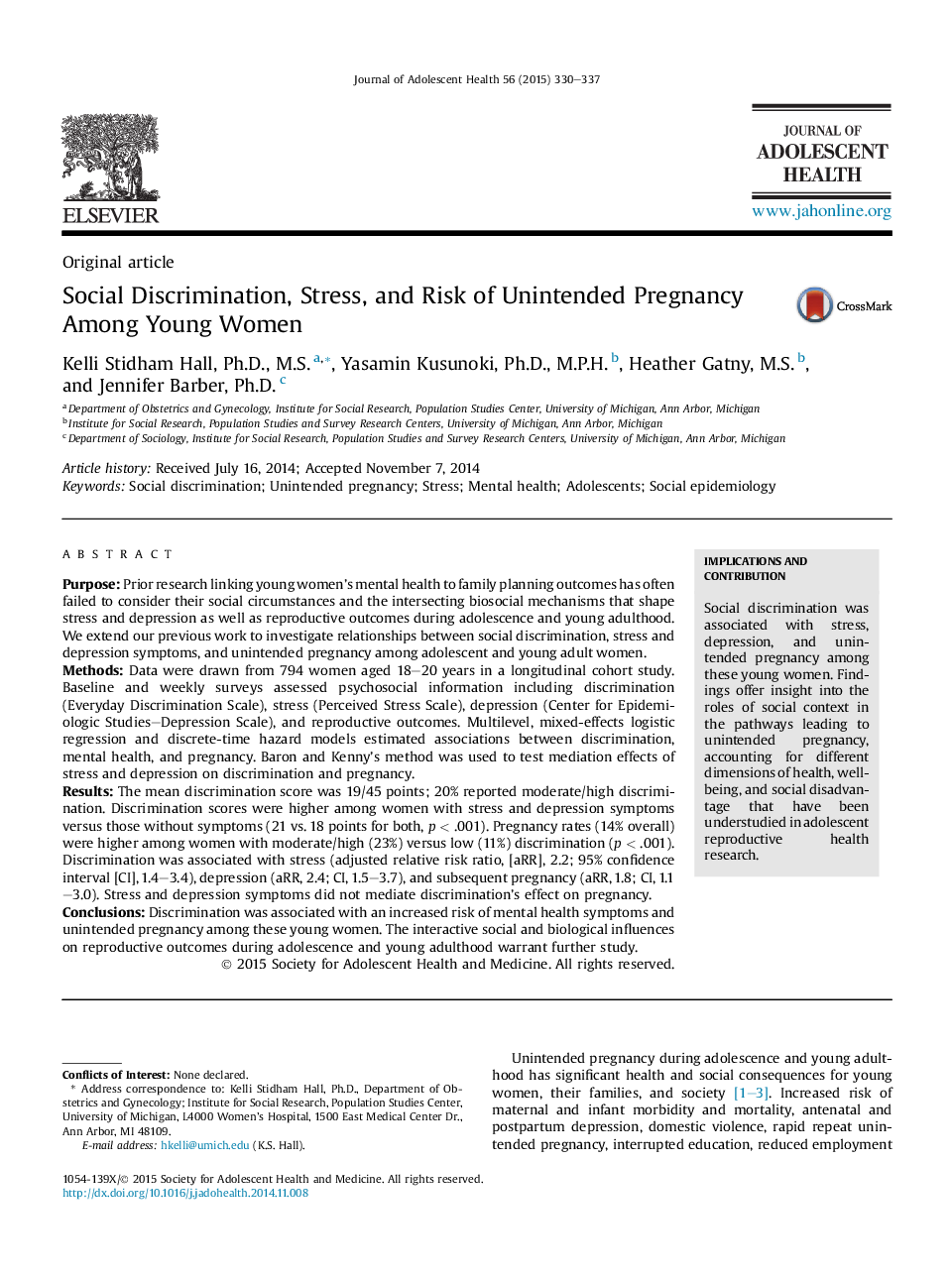| کد مقاله | کد نشریه | سال انتشار | مقاله انگلیسی | نسخه تمام متن |
|---|---|---|---|---|
| 1077984 | 950414 | 2015 | 8 صفحه PDF | دانلود رایگان |
• Social discrimination was not uncommon among our adolescent and young adult women.
• The strongest predictor of social discrimination was prior adolescent pregnancy.
• Discrimination was related to increased risk of subsequent unintended pregnancy.
• Discrimination was also associated with moderate/severe stress and depression symptoms.
PurposePrior research linking young women's mental health to family planning outcomes has often failed to consider their social circumstances and the intersecting biosocial mechanisms that shape stress and depression as well as reproductive outcomes during adolescence and young adulthood. We extend our previous work to investigate relationships between social discrimination, stress and depression symptoms, and unintended pregnancy among adolescent and young adult women.MethodsData were drawn from 794 women aged 18–20 years in a longitudinal cohort study. Baseline and weekly surveys assessed psychosocial information including discrimination (Everyday Discrimination Scale), stress (Perceived Stress Scale), depression (Center for Epidemiologic Studies–Depression Scale), and reproductive outcomes. Multilevel, mixed-effects logistic regression and discrete-time hazard models estimated associations between discrimination, mental health, and pregnancy. Baron and Kenny's method was used to test mediation effects of stress and depression on discrimination and pregnancy.ResultsThe mean discrimination score was 19/45 points; 20% reported moderate/high discrimination. Discrimination scores were higher among women with stress and depression symptoms versus those without symptoms (21 vs. 18 points for both, p < .001). Pregnancy rates (14% overall) were higher among women with moderate/high (23%) versus low (11%) discrimination (p < .001). Discrimination was associated with stress (adjusted relative risk ratio, [aRR], 2.2; 95% confidence interval [CI], 1.4–3.4), depression (aRR, 2.4; CI, 1.5–3.7), and subsequent pregnancy (aRR, 1.8; CI, 1.1–3.0). Stress and depression symptoms did not mediate discrimination's effect on pregnancy.ConclusionsDiscrimination was associated with an increased risk of mental health symptoms and unintended pregnancy among these young women. The interactive social and biological influences on reproductive outcomes during adolescence and young adulthood warrant further study.
Journal: Journal of Adolescent Health - Volume 56, Issue 3, March 2015, Pages 330–337
